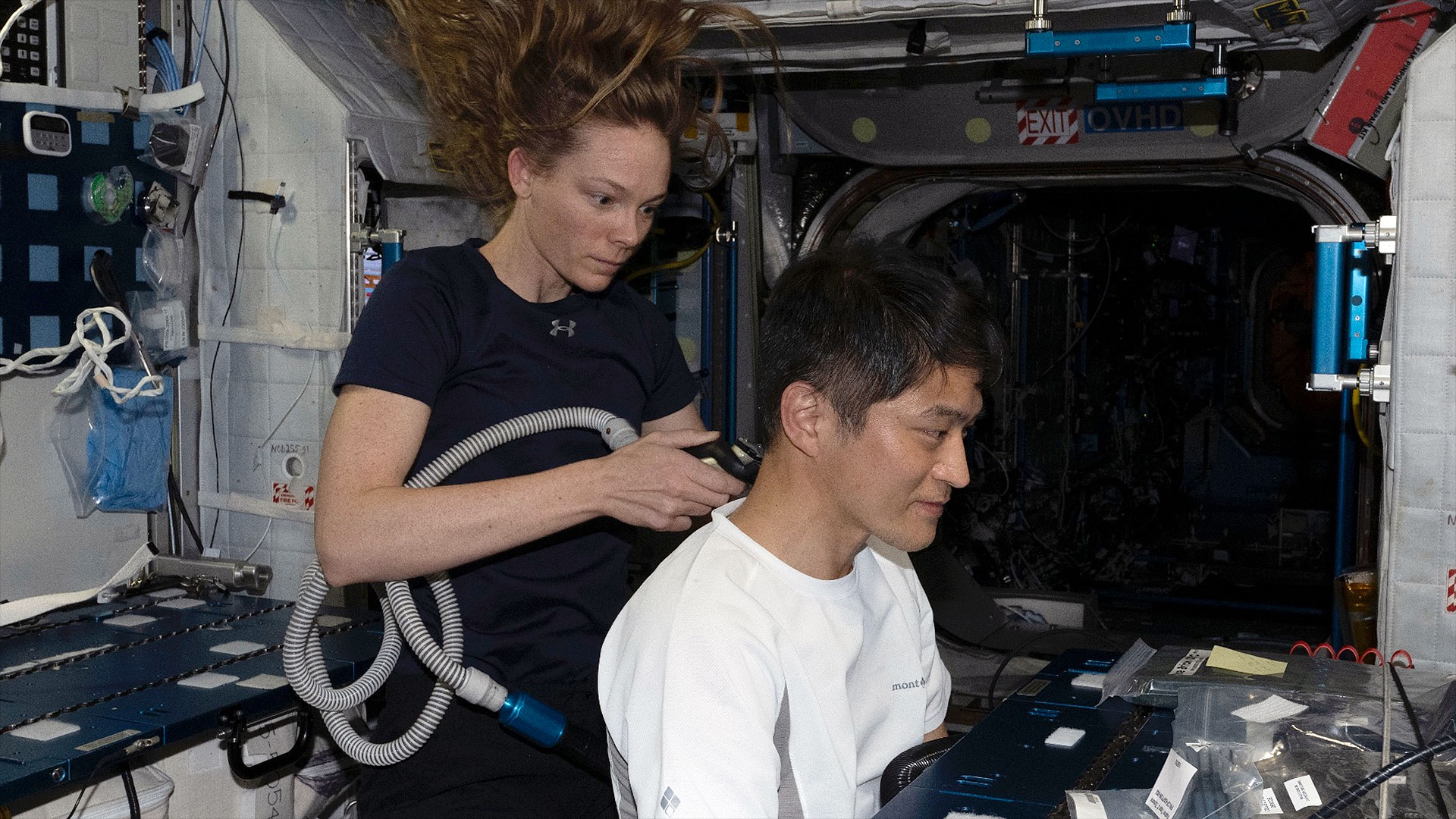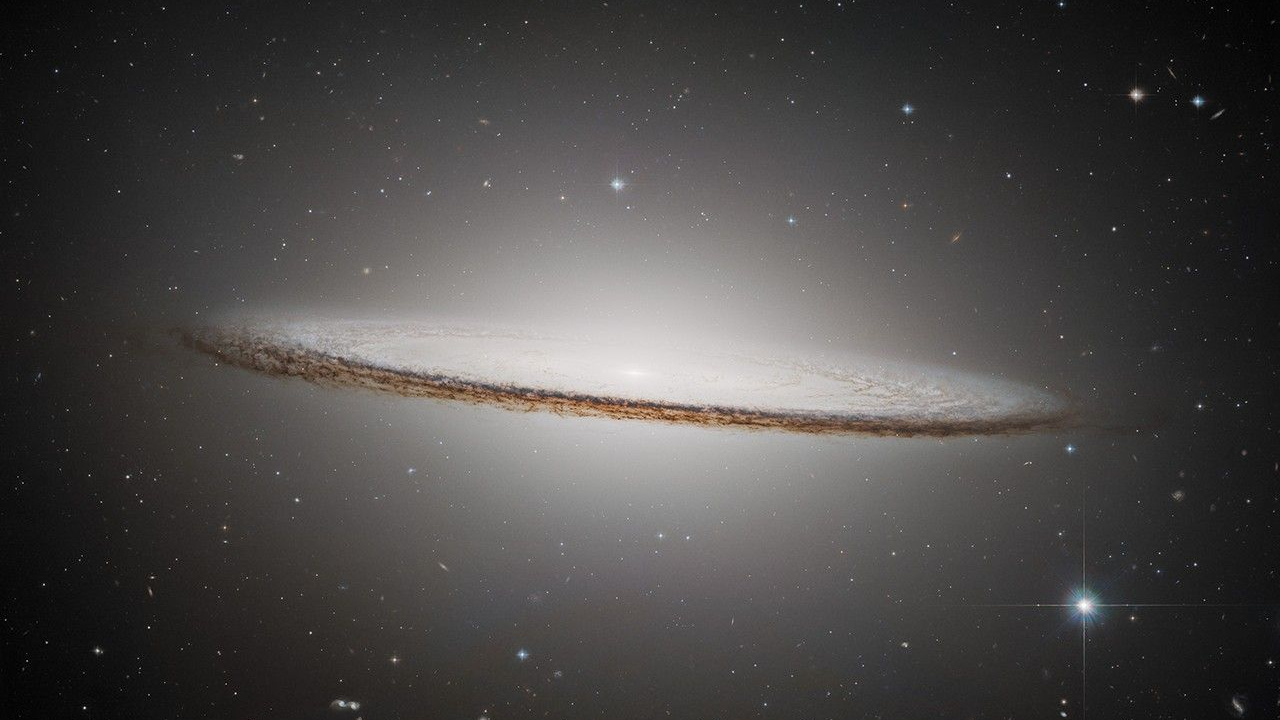Watch live as astronauts on the ISS celebrate the station's 25th anniversary today (video)
Starting from two modules in 1998, the ISS now is a six-bedroom research facility.
Astronauts on the International Space Station will celebrate 25 years of their vehicle in orbit on Wednesday (Dec. 6), and you can watch the event live.
The six astronauts of the International Space Station (ISS) Expedition 70 crew will mark the 25th anniversary of the Russian Zarya and U.S. Unity modules meeting up Dec. 6, 1998. You can watch the event live here at Space.com, via NASA Television, at 12:25 p.m. EST (1725 GMT).
The Expedition 70 astronauts include commander Andreas Mogensen (European Space Agency), Jasmin Moghbeli (NASA), Satoshi Furukawa (Japan Aerospace Exploration Agency), Loral O'Hara (NASA) and Russian cosmonauts Konstantin Borisov, Oleg Kononenko and Nikolai Chub. The crew, by coincidence, represents all the largest ISS partners on the orbiting complex.
The Zarya module blasted to space on its own on Nov. 20 1998, using a Russian Proton rocket launching from the Baikonur Cosmodrome in Kazakhstan. Unity came to space on board the STS-88 space shuttle Endeavour mission that launched on Dec. 4, 1998.
The commander of STS-88, Bob Cabana, will also join the event in his current role as NASA's associate administrator alongside Joel Montalbano, ISS program manager. Cabana was also the first American to enter the ISS, NASA officials said in a release about the anniversary event.
Related: Track the ISS: How and where to see it
The ISS has greatly expanded from its two-room origins into a six-bedroom complex that has hosted 273 individuals from 21 countries, according to NASA statistics. The complex has had nearly 270 spacewalks servicing or assembling the space station, including 198 on the U.S. side and 71 on the Russian side. Crews typically complete hundreds of experiments during missions that can last between six months and 12 months at a time.
Get the Space.com Newsletter
Breaking space news, the latest updates on rocket launches, skywatching events and more!
In addition to the station itself, the vehicles serving the ISS have changed a lot in the last quarter-century. The early days used the space shuttle and Russian Soyuz for crews, alongside government cargo vehicles from Russia, Japan and Europe. The space shuttle retired in 2011, and for nearly a decade, Soyuz was the exclusive ride to the space station. Soyuz continues to launch all Russian crews today, alongside some U.S. astronauts under an agreement with NASA.
Today, private SpaceX Dragon and Northrop Grumman cargo ships resupply the space station. U.S. companies also have two vehicles on offer for astronauts: SpaceX's Crew Dragon (in service since 2020) and Boeing's Starliner (expected to run its first mission with astronauts in 2024.) Meanwhile, Axiom Space is running independent private missions to the space station for commercial purposes, using paying customers to pay for seats.
Related: Private space station: How Axiom Space plans to build its orbital outpost
The ISS also aims to fly a diverse set of individuals in space, and has celebrated numerous societal milestones in the last five years. A few include the first all-woman spacewalk in 2019, the first long-duration missions by a Black man (NASA astronaut Victor Glover) and Black woman (NASA's Jessica Watkins) and the first long-duration mission by a Native American woman (NASA's Nicole Mann).
Also, this year Hispanic-American Frank Rubio accidentally set the record for longest NASA mission in space, 371 days, following an issue with his Soyuz spacecraft that doubled his stay in orbit. Astronauts from several countries outside the U.S. have set their own records for spacewalking, space station commands, long-duration missions and similar milestones, too.
Most partners of the ISS have committed to extending the partnership until at least 2030, and NASA has committed to funding several private space stations to keep a presence in low Earth orbit in the next decade. Russia will remain with the ISS until at least 2028, although it may be longer. (The ISS is one of Russia's few remaining space partnerships internationally after its unsanctioned invasion of Ukraine in 2022, which is ongoing.)
The moon is the new focus of the ISS partners. NASA has formed the Artemis Accords, a coalition of more than 30 countries that are aiming for peaceful space exploration together; a few of those partners are also working on moon missions with the NASA-led Artemis program. Russia has allied with China, and a few other countries, on its own moon-facing alliance in the coming years.
Join our Space Forums to keep talking space on the latest missions, night sky and more! And if you have a news tip, correction or comment, let us know at: community@space.com.

Elizabeth Howell (she/her), Ph.D., was a staff writer in the spaceflight channel between 2022 and 2024 specializing in Canadian space news. She was contributing writer for Space.com for 10 years from 2012 to 2024. Elizabeth's reporting includes multiple exclusives with the White House, leading world coverage about a lost-and-found space tomato on the International Space Station, witnessing five human spaceflight launches on two continents, flying parabolic, working inside a spacesuit, and participating in a simulated Mars mission. Her latest book, "Why Am I Taller?" (ECW Press, 2022) is co-written with astronaut Dave Williams.









